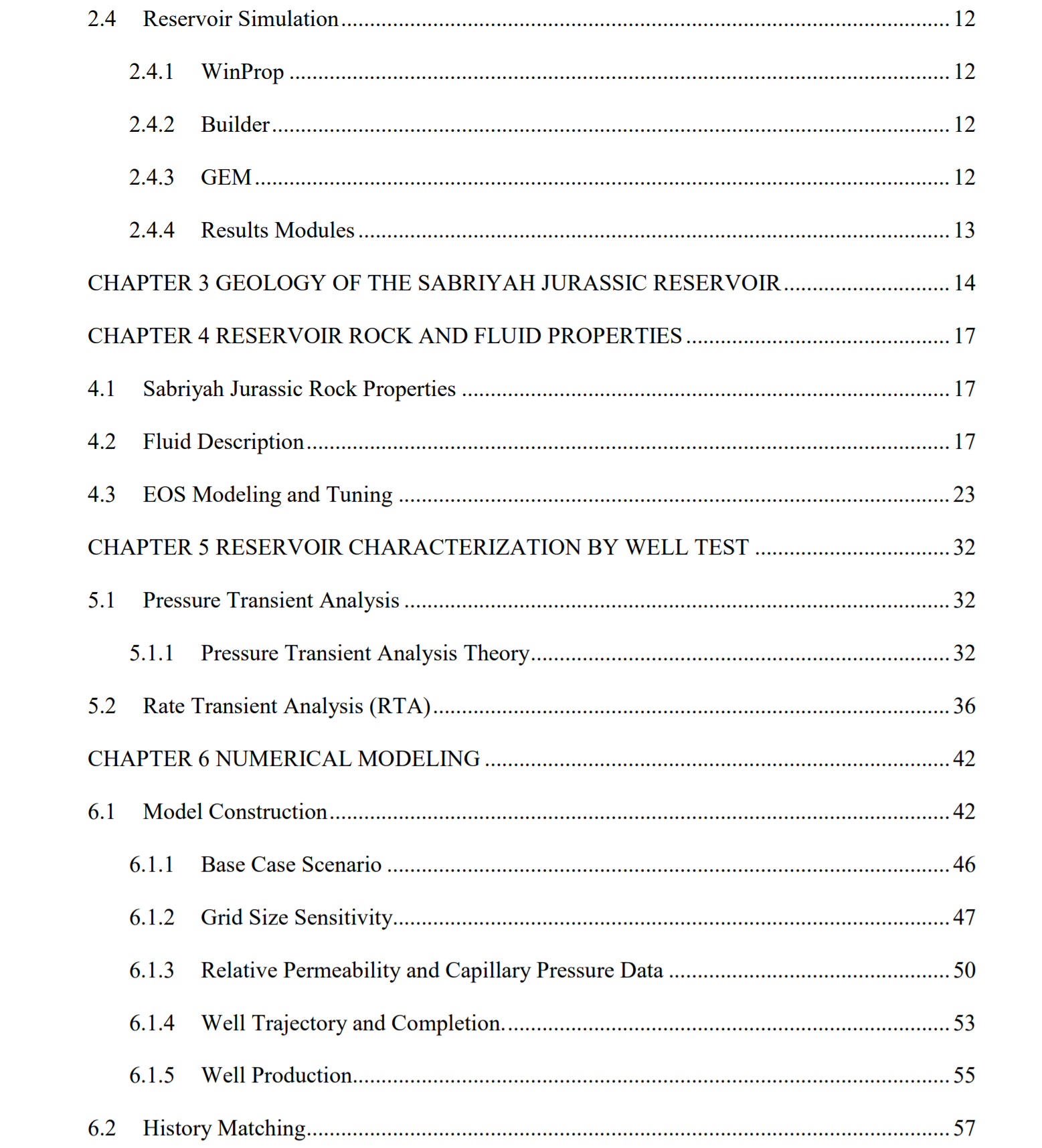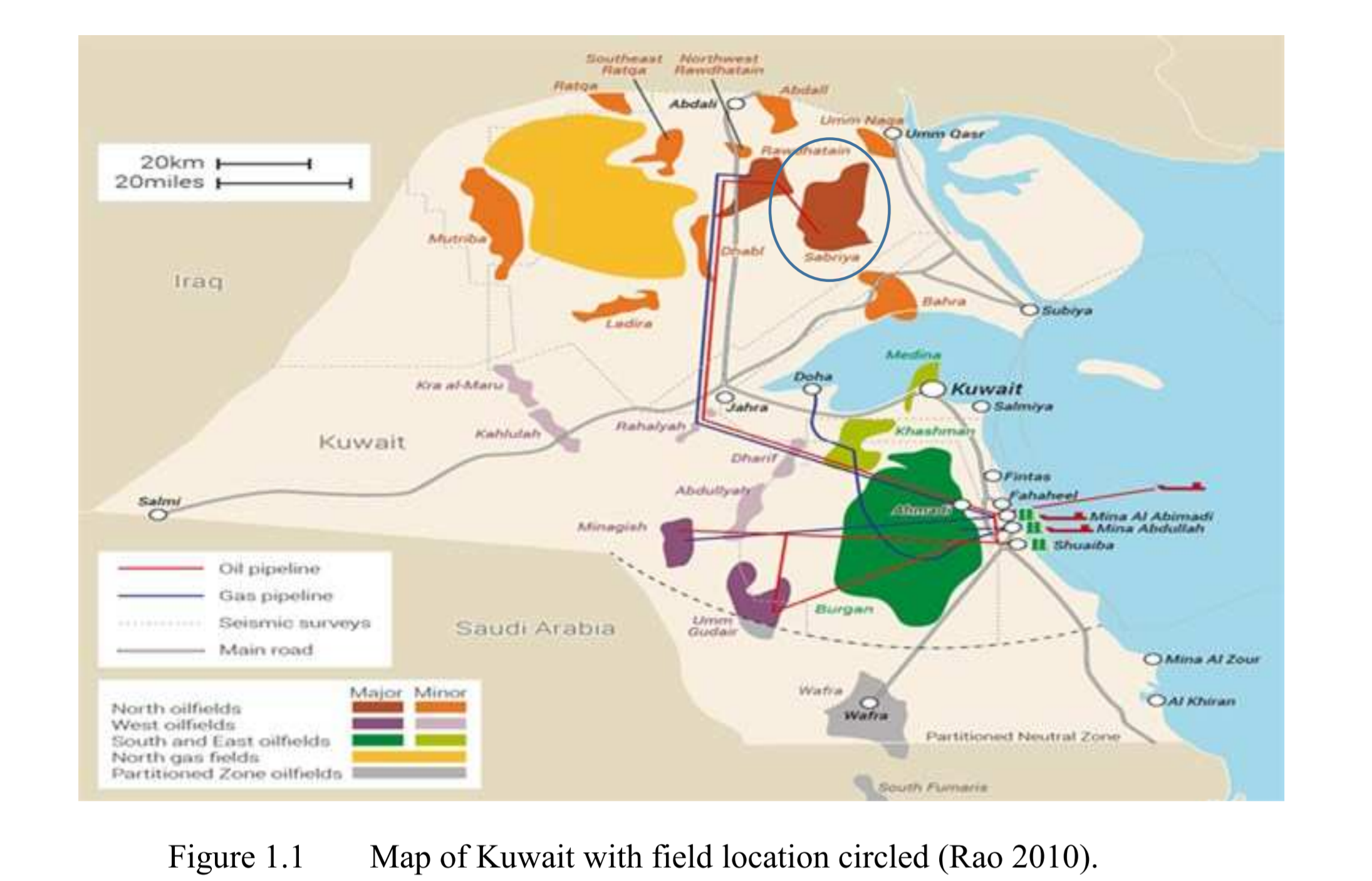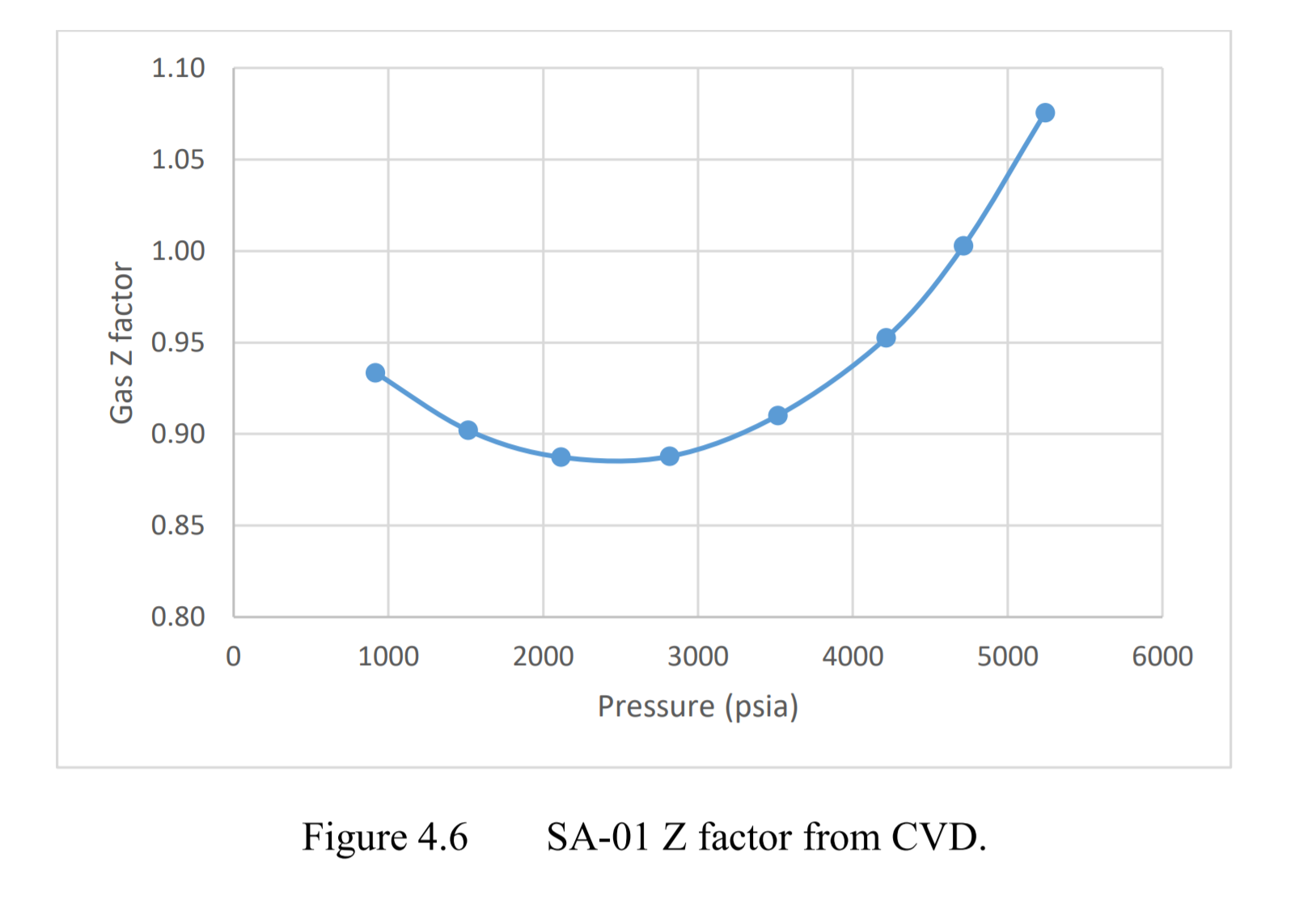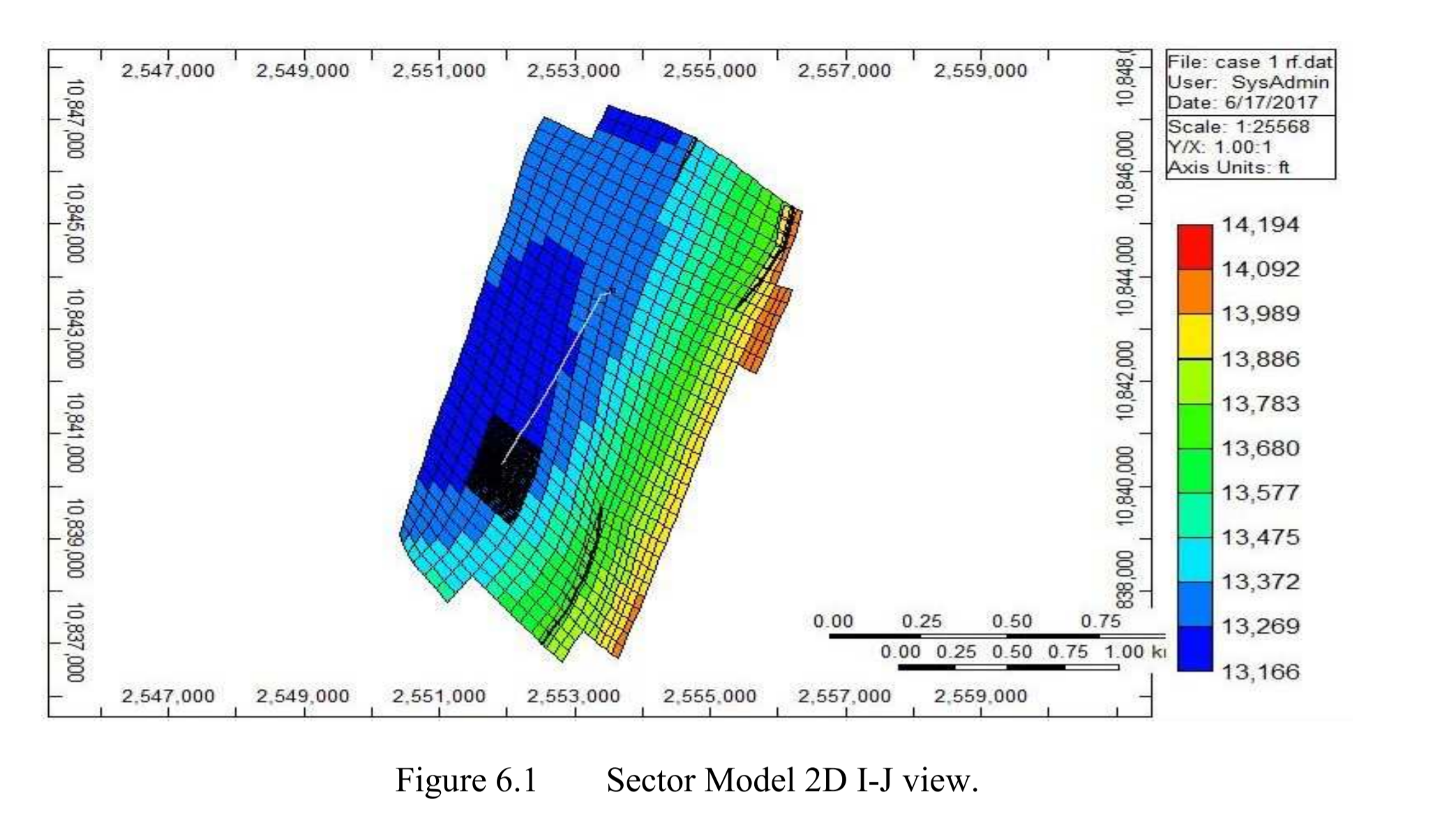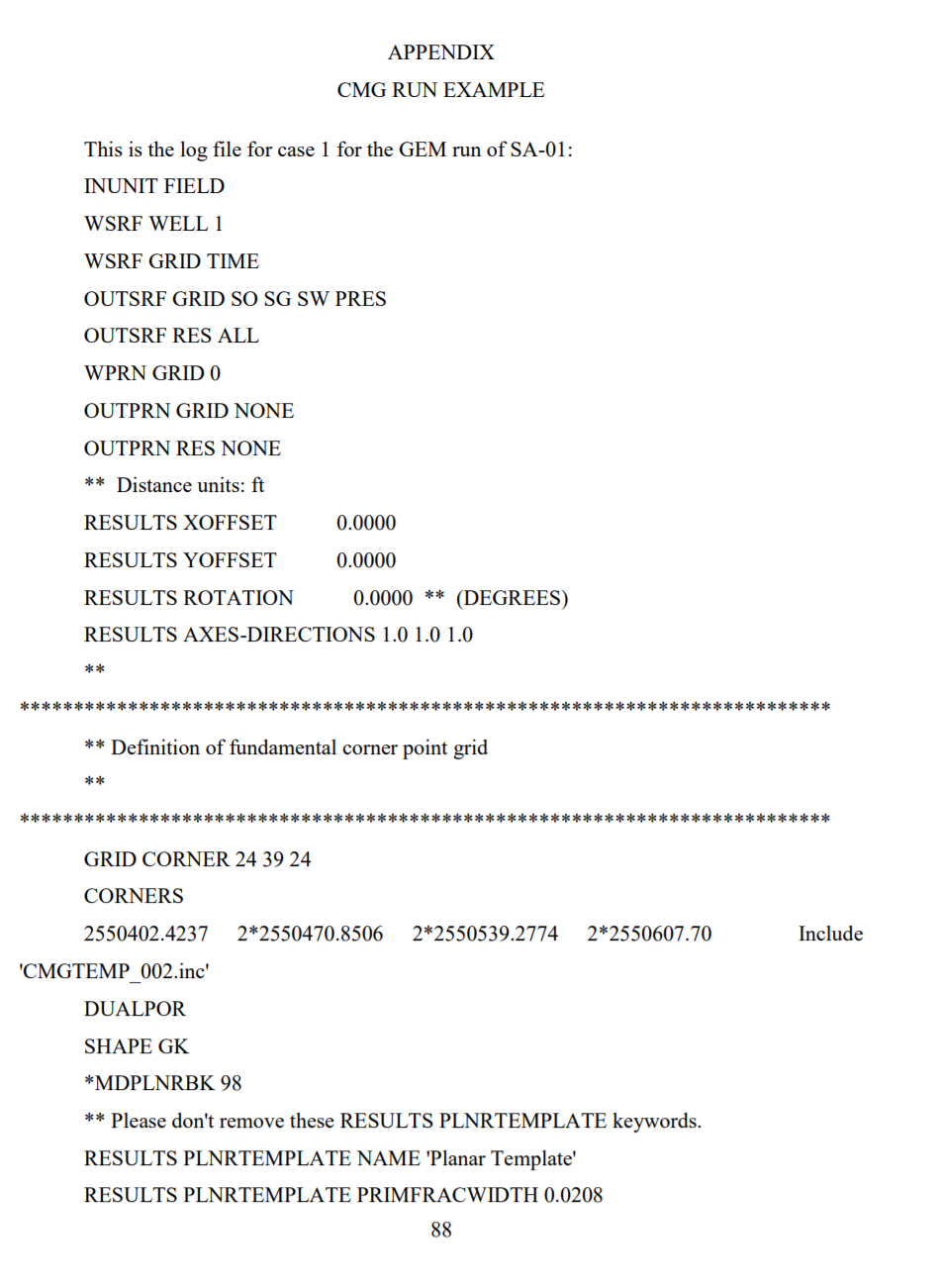COMPOSITIONAL MODELING OF SABRIYAH NATURALY FRACTURED GAS CONDENSATE RESERVOIR, KUWAIT
Abstract
The thesis pertains to numerical modeling of Sabriyah gas-condensate reservoir in Kuwait. Sabriyah is an abnormally high-pressure, 11,000 psi, naturally fractured carbonate reservoir. The bottom hole temperature is 262 degrees Fahrenheit and the dew-point pressure for a reservoir fluid sample is about 5241 psi. The purpose of modeling was to evaluate the potential of improving conventional production from Sabriyah SA-01Well without any re-drilling to extend the well length except for placing three transverse hydraulic fractures in the well. The underlying problem is that reservoir gas is condensate and the well productivity is compromised because of liquid condensation both in the matrix and in the fracture pore space in the vicinity of the wellbore. Specifically, condensation begins from the wellbore into the well drainage volume as the bottom hole pressure drops below the dew point pressure of the reservoir hydrocarbon fluid. Liquid condensation causes two problems. The first problem is that the gas condenses below the dew-point pressure and the resulting gas-condensate becomes immobile. The second problem is that the permeability of the matrix pores and the fracture become essentially an order of magnitude smaller. The thesis specifically addresses these issues and examines a practical approach for alleviating this problem. The research scope included: (1) Understanding the geologic characteristics of Sabriyah reservoir, (2) Building a dual-porosity model, (3) Analyzing well performance and pressure buildup behavior of horizontal well SA-01, (4) Conducting a history match of the well production, and (5) Evaluating the improved performance of the same well using three transverse hydraulic fractures in the well. To achieve the thesis objectives, I utilized the well’s production data, a pressure buildup test, core characterization, permeability, relative permeability, capillary pressure, porosity, and PVT data from the well. The reservoir model surrounding the well is a sector of Sabriyah reservoir. The dynamic behavior of the well was modeled using CMG’s compositional reservoir simulator and the geological and petrophysical data for the model was obtained from Schlumberger’s Petrel. After history matching, six potential production scenarios involving the three-stage hydraulic fracture stimulation were evaluated. It was concluded that a horizontal well, without any extensions, performs nearly as effective as having a three-stage hydraulic fracture embedded in the well. The reason is that the natural fractures provide the improved flow path to the well. If the well could be elongated, we anticipate to obtain additional improvements; however, because of the large reservoir depth the cost is a major issue. Thus, the latter was not included in this thesis, but we recommend it as a future study.
